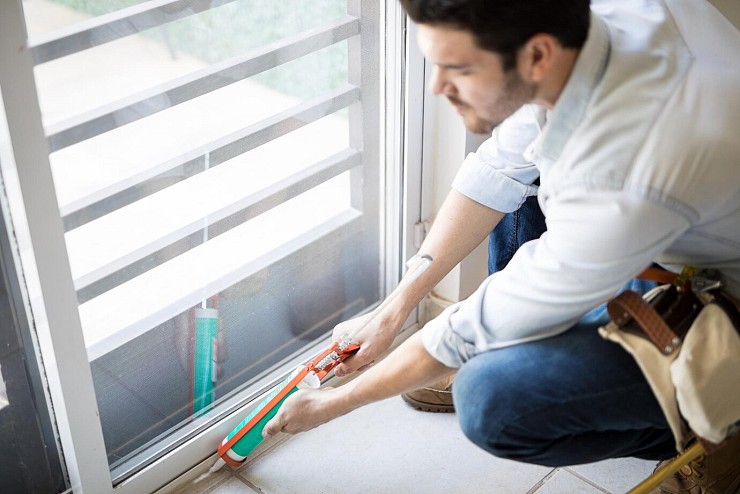How to Prepare Your Home for Window Replacement

Replacing windows in your home is a significant project that can improve energy efficiency, enhance curb appeal, and boost the overall comfort of your living space. Proper preparation is key to ensuring the process goes smoothly and efficiently. Whether you’re replacing one window or all the windows in your home, taking the right steps can save time, reduce stress, and help you get the most out of your investment. Here’s a comprehensive guide on how to prepare your home for window replacement.
Understand the Scope of the Project
Before the installation day, familiarize yourself with the scope of the window replacement project. Ask your contractor or window company the following questions:
- How long will the project take?
- What steps are involved in the installation process?
- Will there be any disruptions to your daily routine?
Having a clear understanding of the timeline and process will help you plan accordingly and avoid surprises.
Additionally, understanding the type of windows being installed and their unique features can help you better prepare. Modern windows often come with energy-efficient coatings, noise-reducing properties, or enhanced security features. Knowing what to expect ensures you’re ready for the benefits and adjustments.
Clear the Work Area
Remove Window Treatments
Take down curtains, blinds, shades, and any other window treatments. This provides the installers with easy access to the windows and ensures these items don’t get damaged during the process.
Move Furniture and Decorations
Move furniture, wall hangings, and decorations away from the windows being replaced. This prevents them from getting in the way or being accidentally damaged during installation.
Clear Outdoor Spaces
If your window replacement involves outdoor access, clear any obstructions like patio furniture, plants, or garden tools from the exterior area around the windows.
Consider pruning any nearby shrubs or trees that might obstruct the installer’s work. Keeping the outdoor area neat ensures safety and efficiency during the installation process.
Protect Your Belongings
Cover Furniture and Floors
Use drop cloths or plastic sheeting to protect your floors and furniture from dust and debris. While professional installers typically aim to minimize mess, some dust is inevitable.
Remove Fragile Items
Take down mirrors, vases, and other fragile items from shelves and walls near the work area. Vibrations from the installation process could accidentally cause them to fall or break.
If you have valuable electronics or sensitive equipment near the work area, consider moving them to a safe location. Dust and vibrations could potentially interfere with their operation.
Prepare for Dust and Noise
Contain the Dust
Dust is an unavoidable part of window replacement. Seal off rooms not involved in the project with plastic sheeting or close doors to minimize the spread of dust throughout your home.
You might also consider using air purifiers in adjacent rooms to help capture airborne dust particles and maintain air quality.
Anticipate Noise
Window replacement can be noisy due to the tools and materials involved. Consider arranging for children, pets, or sensitive household members to spend time away from home during the installation.
If you work from home, plan ahead by scheduling important calls or tasks for a quieter time. Alternatively, use noise-canceling headphones to stay focused.
Protect Your Belongings
Cover Furniture and Floors
Use drop cloths or plastic sheeting to protect your floors and furniture from dust and debris. While professional installers typically aim to minimize mess, some dust is inevitable.
Remove Fragile Items
Take down mirrors, vases, and other fragile items from shelves and walls near the work area. Vibrations from the installation process could accidentally cause them to fall or break.
If you have valuable electronics or sensitive equipment near the work area, consider moving them to a safe location. Dust and vibrations could potentially interfere with their operation.
Prepare for Dust and Noise
Contain the Dust
Dust is an unavoidable part of window replacement. Seal off rooms not involved in the project with plastic sheeting or close doors to minimize the spread of dust throughout your home.
You might also consider using air purifiers in adjacent rooms to help capture airborne dust particles and maintain air quality.
Anticipate Noise
Window replacement can be noisy due to the tools and materials involved. Consider arranging for children, pets, or sensitive household members to spend time away from home during the installation.
If you work from home, plan ahead by scheduling important calls or tasks for a quieter time. Alternatively, use noise-canceling headphones to stay focused.
Plan for Disposal of Old Windows
Discuss with your contractor whether they will handle the disposal of old windows. If not, arrange for proper disposal or recycling of the materials. Some companies may charge a fee for removal, so clarify this detail beforehand.
If you’re environmentally conscious, ask about recycling options for the old materials. Many window components can be repurposed or recycled, reducing waste.
Prepare for Post-Installation Tasks
Inspect the Installation
Once the project is complete, inspect the work to ensure all windows are installed correctly and meet your expectations. Look for gaps, drafts, or signs of improper sealing.
Clean Up
Professional installers often perform basic cleanup after the job, but you may need to do additional cleaning to remove lingering dust or debris.
Reinstall Window Treatments
After the new windows are installed, you can put back curtains, blinds, and other window treatments. Take this opportunity to clean them before reinstalling.
While reinstalling, consider upgrading your window treatments to complement your new windows. Modern treatments can enhance energy efficiency and aesthetics.
Plan for Future Maintenance
New windows often come with warranties and care instructions. Familiarize yourself with these guidelines to keep your windows in excellent condition and maintain their warranty coverage.
Regularly cleaning and inspecting your windows can help you spot potential issues early. For example, check for signs of wear on seals or hardware to address them before they become larger problems.
If you’ve chosen energy-efficient windows, monitor your energy bills to see the benefits. Proper maintenance ensures these windows continue to perform at their best.
Conclusion
Preparing your home for window replacement doesn’t have to be overwhelming. By taking the steps outlined above, you can ensure a smooth and efficient process, minimize disruption to your household, and protect your belongings. Investing time in preparation will not only help the installers do their job more effectively but also enhance your overall experience and satisfaction with your new windows. With careful planning, your window replacement project can be a hassle-free experience that adds value and comfort to your home.











